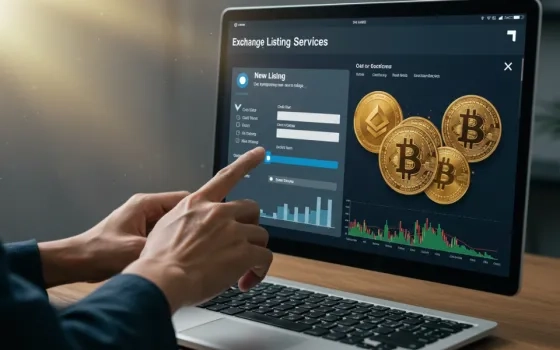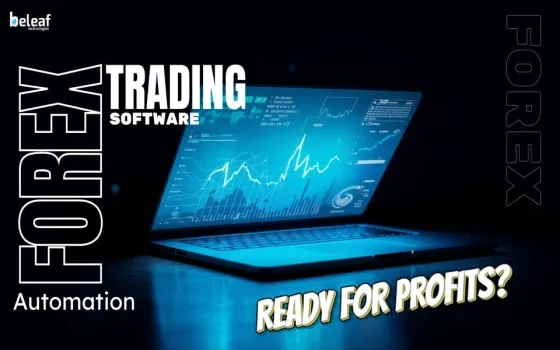In the ever-evolving world of blockchain, few events hold as much weight as a cryptocurrency's exchange listing. Whether it’s a centralized exchange (CEX) like Binance or Coinbase, or a decentralized exchange (DEX) like Uniswap or PancakeSwap, getting listed signifies a critical turning point in a token's lifecycle. For startups, builders, and investors alike, an exchange listing acts as a public validation of a project’s legitimacy, readiness, and long-term ambitions. But beyond the excitement and price volatility, a deeper question emerges: how exactly does this listing influence investor confidence and token valuation? This blog unpacks the strategic, psychological, and market-driven dynamics that make exchange listings pivotal in shaping a token’s growth trajectory.
The Perception of Legitimacy
One of the most immediate effects of a crypto exchange listing is the enhancement of perceived legitimacy. Investors—especially those who are less technical or new to crypto—often view exchange listings as a stamp of approval. This is particularly true when the token secures a listing on a top-tier platform like Binance, Coinbase, or Kraken, which conduct extensive due diligence before onboarding any digital asset. These platforms evaluate project fundamentals, tokenomics, security audits, legal compliance, and community size before allowing a listing. When a token passes these hurdles, it sends a signal to investors that the project has been vetted and is credible.
This perception of legitimacy plays a crucial psychological role. Retail investors often use exchange listings as a heuristic to differentiate between “real” projects and scams or vaporware. As a result, the simple act of getting listed can expand the investor base dramatically, converting cautious observers into active participants. This expansion of trust sets the stage for increased demand, which naturally leads to upward momentum in token valuation.
Enhanced Liquidity and Price Discovery
Exchange listings also unlock access to broader liquidity, which is fundamental to any financial asset’s success. Before listing, many tokens are confined to limited trading on private platforms, OTC deals, or small DEXs with insufficient volume. This illiquidity creates wide bid-ask spreads and deters serious investors who require confidence in price execution. Once listed on a liquid exchange, however, the trading volume typically increases significantly.
This new liquidity allows for smoother price discovery. More participants trading the token in real time helps establish a market-driven valuation, which reflects true investor sentiment. Institutional players, market makers, and algorithmic traders often enter only after a token is listed, further deepening the liquidity pool. As confidence in trading execution rises, so too does investor confidence in the token’s price integrity, which feeds back into market demand.
Increased Visibility and Network Effects
The visibility that comes with an exchange listing cannot be overstated. Cryptocurrency exchanges are more than just trading venues; they function as marketing engines with built-in audiences. When a token is listed, it benefits from exposure to the exchange’s entire user base. This often includes newsletter announcements, social media promotion, in-app banners, and even spotlight features for new listings. Such visibility introduces the token to thousands, if not millions, of new users overnight.
Increased visibility drives what are known as network effects—where each new participant increases the value of the ecosystem for others. As more people become aware of and invest in the token, it fosters broader community engagement, more use-case development, and stronger social proof. These elements contribute significantly to investor confidence, as people tend to follow trends with high participation. The fear of missing out (FOMO) generated by a high-profile listing can amplify demand and, consequently, valuation.
Exchange Reputation and Its Effect on Valuation
Not all exchanges are created equal, and the reputation of the listing platform plays a significant role in how investors respond. A listing on a well-regulated, globally recognized exchange tends to generate a stronger positive reaction than one on a little-known platform with questionable security and volume. This is because top-tier exchanges are seen as gatekeepers with stringent standards. Their endorsement, implicit through listing approval, can enhance a token’s appeal among both retail and institutional investors.
Moreover, institutional players such as hedge funds and crypto-focused venture capital firms are more likely to engage with tokens listed on reputable exchanges due to compliance requirements and trading infrastructure. These players often move significant volumes, and their involvement can cause notable spikes in token valuation. A listing on a Tier-1 exchange may thus serve as a green light for larger players to start accumulating the asset, which in turn reassures smaller investors about the long-term viability of the project.
The Role of Speculation and Short-Term Volatility
While exchange listings typically boost investor confidence in the long term, they also invite a wave of speculative activity in the short term. It is common to see a token’s price surge sharply upon listing due to increased demand and anticipation, only to experience a correction once the initial hype settles. This phenomenon, sometimes called “buy the rumor, sell the news,” is particularly common with tokens listed on CEXs with high user engagement.
Speculators and day traders often view new listings as high-volatility opportunities for quick gains. While this trading activity can momentarily inflate token prices, it does not always reflect long-term valuation. Serious investors are usually aware of this dynamic and may wait until after the initial volatility subsides before entering a position. Nonetheless, the short-term attention generated by speculative trading brings more eyes to the project, some of whom may convert into long-term believers once they analyze the fundamentals.
Building Long-Term Investor Confidence
Sustaining investor confidence beyond the initial listing hype requires continued effort from the project team. Post-listing activities such as consistent roadmap execution, regular communication, ecosystem development, and maintaining liquidity are critical. Exchange listings open the door to a wider audience, but only projects with strong fundamentals and active development can maintain long-term valuation growth.
Investors look for signs that the listing wasn’t merely a short-term liquidity event, but rather a step toward broader adoption. For instance, if a token launches a staking mechanism, a product beta, or onboarding of new partners shortly after the listing, it builds trust that the project is in active growth mode. Additionally, community engagement through AMAs, governance proposals, and educational content can keep investors informed and aligned with the project’s vision. These strategies reinforce the idea that the token’s value is rooted in real-world utility, not just exchange hype.
Compliance, Regulation, and Institutional Participation
Another reason why exchange listings impact investor confidence and valuation is the role they play in regulatory compliance. Top exchanges are increasingly selective about the tokens they onboard, often requiring KYC/AML documentation, legal opinions, and detailed disclosures. When a token meets these requirements, it is often seen as more compliant and future-proof. This compliance aspect is critical for institutional investors who must adhere to stricter regulatory frameworks.
A compliant listing makes it easier for funds, DAOs, and other regulated entities to allocate capital into the project. This influx of institutional capital not only boosts valuation but also adds a layer of security for retail investors. The presence of professional stakeholders suggests that the token has passed multiple layers of scrutiny, further bolstering investor confidence.
The Signaling Effect for Future Listings
Securing a listing on one reputable exchange often paves the way for listings on additional platforms. This is known as the “signaling effect.” Exchanges tend to monitor their competitors, and once a token proves successful on one platform, others may follow suit to avoid losing volume and user interest. This cascading effect can significantly accelerate the token’s exposure and adoption.
Investors are highly attuned to this trend. They often anticipate secondary and tertiary listings, which creates a speculative upward pressure on token price. The more listings a token secures, the more accessible it becomes across regions and user demographics. This multi-listing strategy helps decentralize trading activity and reduces reliance on a single platform, both of which contribute positively to valuation stability and investor trust.
Community and Market Sentiment
Lastly, it is important to consider the emotional and social dimension of exchange listings. In crypto, community sentiment is a powerful force. Exchange listings are often celebrated milestones that energize communities, attract influencers, and generate media attention. This wave of positive sentiment can dramatically increase engagement across platforms like Twitter, Telegram, Discord, and Reddit.
When community members feel that their project is gaining traction and receiving recognition, their confidence in the long-term success of the token grows. This emotional buy-in translates into reduced sell pressure and greater willingness to hold, stake, or participate in governance. A strong, confident community becomes one of the greatest assets a token can have—and listings often serve as the spark that brings such communities to life.
Conclusion
A cryptocurrency exchange listing is far more than just a trading event—it’s a multifaceted milestone that significantly impacts investor confidence and token valuation. From enhancing legitimacy and unlocking liquidity to improving visibility, compliance, and institutional access, the effects of a well-executed listing are far-reaching. While short-term volatility is often inevitable, the long-term success of a listing depends on the project’s ability to back it with real-world progress, transparency, and community alignment.
For founders and token creators, understanding this dynamic is crucial. A listing should be part of a broader strategy—not an endpoint, but a powerful launchpad for sustained growth. And for investors, a listing offers valuable insight into a project’s maturity, ecosystem potential, and credibility in the ever-competitive world of crypto assets.















